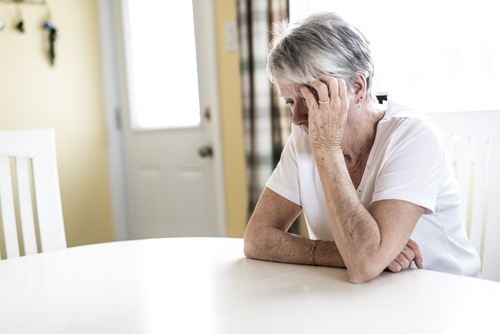Parkinson’s Medications Relieve Central Pain Better than Other Types of Pain, Study Finds

Treatment with standard Parkinson’s therapies, such as levodopa or dopamine agonists, can provide effective relief of central parkinsonian pain, but they may fail to manage motor symptoms in these patients, a study has found.
As many patients with Parkinson’s disease experience some type of pain, these findings suggest that clinicians should take an integrated approach to ensure adequate care for motor and non-motor symptoms in this population.
The study, “Unveiling the Relationship Between Central Parkinsonian Pain and Motor Symptoms in Parkinson’s Disease,” was published in the European Journal of Pain.
Pain is a common non-motor symptom in Parkinson’s patients, but little is known about its clinical characteristics and possible predictors.
Parkinson’s can affect the way patients experience pain, and it can lead to pain even in the absence of any evident cause for it. This is the case of central parkinsonian pain, which is characterized by a constant, aching type of pain affecting most of the body and is caused by Parkinson’s disease itself. This type of pain is poorly understood and can be difficult to treat.
Nuno Vila-Chã, MD, neurologist and researcher at Centro Hospitalar do Porto and the University of Porto, in Portugal, and his collaborators were interested in studying the prevalence and types of pain experienced by people with Parkinson’s. They examined the relationship between central pain and patient characteristics, as well as the impact of Parkinson’s targeted treatments on this type of pain.
They analyzed the clinical records, and performed interviews and neurological examinations of 292 patients with Parkinson’s, aged 63 to 79. The patients’ motor symptoms and degree of independence were assessed using different rating scales, while the patients were on medications (in the morning) or off medications. Anxiety, depression, and impulse control disorders (such as dopamine dysregulation syndrome) were also evaluated through patient-reported questionnaires.
Pain was categorized as central parkinsonian or non-central parkinsonian by a neurologist, based on the patients’ description of their pain. Central parkinsonian pain was defined as “burning, tingling, formication, or ‘neuropathic’ sensations, often relentless and bizarre in quality, not confined to root or nerve territory, and not explained by rigidity, dystonia, musculoskeletal, or internal lesion.”
Except for four patients, all (99%) were taking levodopa alone or combined with a dopamine agonist (taken by 39% of the patients), which included ropinirole (108 patients; brand name Requip, among others), pramipexole (two patients; sold as Mirapex and other names), and piribedil (three patients; sold as Trivastal, among other names).
Most patients (73%) reported feeling some sort of pain, which had lasted for a median time of five years. These patients classified it as either musculoskeletal (in 63% of the patients), dystonia-related (27%), central parkinsonian (22%), and/or radicular or neuropathic (9%).
About one-third (68 or 32%) of the patients reported that the pain developed before their Parkinson’s motor symptoms, and half (105 or 50%) said that they could achieve pain relief with antiparkinsonian therapy.
Many of them (78%) reported to have one type of pain, while some patients (22%) claim to experience two or more forms of pain. Many also complained of feeling pain everyday (63%) and rated it as moderate or severe (83%).
The team found that patients who experienced pain also were the ones with more comorbidities (particularly diseases affecting the bones and joints) and more severe motor symptoms.
These findings “confirmed that pain is a common non-motor symptom in Parkinson’s disease and that the presence of pain is associated with more severe motor manifestations of Parkinson’s,” the researchers wrote.
The researchers found that patients with central pain specifically had certain demographic and clinical characteristics. These patients were significantly younger, and their disease often started earlier, but had fewer comorbidities, compared with patients with non-central pain.
They also showed more disability related to pain and worse non-axial motor symptoms while on medications. Non-axial symptoms include all motor symptoms not related to speech, rigidity of the neck, posture and postural stability, and gait (which are considered axial symptoms).
The patients with central pain reported having greater relief in their pain with the medications they were taking for Parkinson’s, compared with those with non-central pain. Also, there was a tendency for more motor fluctuations in the subgroup of patients who took antiparkinsonian medication to relieve their pain.
“This set of demographic and clinical associations suggests the need for an integrated approach to motor and non-motor symptoms in the clinical care of Parkinson’s patients with central parkinsonian pain,” the researchers stated. Also, the association between pain and mood “appears to be weaker and even more complex in Parkinson’s” than in other diseases, they added.
Future studies should continue to search for a deeper understanding of central pain in Parkinson’s, the team noted, as “the improvement of central parkinsonian pain should be considered as a treatment outcome in Parkinson’s disease.”






